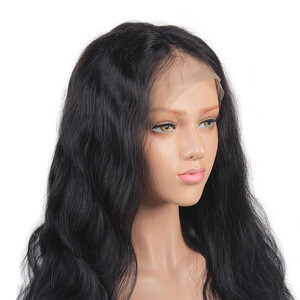These combed-up hair extensions were often very heavy, weighted down with pomades, powders, and other ornamentation. In the late 18th century these coiffures (along with many other indulgences in court life) became symbolic of the decadence of the French nobility, and for that reason quickly became out of fashion from the beginning of the French Revolution in 1789.
During the 18th century, men’s wigs became smaller and more formal with several professions adopting them as part of their official costumes. This tradition survives in a few legal systems. They are routinely worn in various countries of the Commonwealth. Until 1823, bishops of the Church of England and Church of Ireland wore ceremonial wigs. The wigs worn by barristers are in the style favoured in the late eighteenth century. Judges’ wigs, in everyday use as court dress, are short like barristers’ wigs (although in a slightly different style), but for ceremonial occasions judges and also senior barristers (QCs) wear full-bottomed wigs.
19th and 20th Centuries
The wearing of wigs as a symbol of social status was largely abandoned in the newly created United States and France by the start of the 19th century. In the United States, only the first five Presidents, from George Washington to James Monroe, wore powdered wigs according to the old-fashioned style of the 18th century. The latest-born notable person to be portrayed wearing a powdered wig tied in a queue according to this old fashion was Grand Duke Constantine Pavlovich of Russia (born in 1779, portrayed in 1795).
Women’s wigs developed in a somewhat different way. They were worn from the 18th century onwards, although at first only surreptitiously. Full wigs in the 19th and early 20th century were not fashionable. They were often worn by old ladies who had lost their hair. In the film Mr. Skeffington (1944), when Bette Davis has to wear a wig after a bout of diphtheria, it is a moment of pathos and a symbol of her frailty.
During the late nineteenth and early twentieth century hairdressers in England and France did a brisk business supplying postiches, or pre-made small wiglets, curls, and false buns to be incorporated into the hairstyle.
The use of postiches did not diminish even as women’s hair grew shorter in the decade between 1910 and 1920, but they seem to have gone out of fashion during the 1920s. In the 1960s a new type of synthetic wig was developed using a modacrylic fiber which made wigs more affordable. Reid-Meredith was a pioneer in the sales of these types of wigs.

Military Wigs
From the late 17th to early 19th centuries, European armies wore uniforms more or less imitating the civilian fashions of the time, but with militarized additions. As part of that uniform, officers wore wigs more suited to the drawing rooms of Europe than its battlefields. The late 17th century saw officers wearing full-bottomed natural-coloured wigs, but the civilian change to shorter, powdered styles with pigtails in the early 18th century saw officers adopting similar styles. The elaborate, over-sized court-styles of the late 18th century were not followed by armies in the field however, as they were impractical to withstand the rigours of military life and simpler wigs were worn.
Whilst officers normally wore their own hair short under a powdered wig, the rank and file of the infantry was not afforded such luxury. Instead of wigs, the men grew their hair long and according to the prevailing fashion in a nation’s army, hair was either allowed to grow long with simple modeling, as in the French army of the 1740s, or else was elaborately coiffured as in Prussian and British armies. In the case of British soldiers of the 1740s, contemporary artwork suggests that they cut their hair short, which was not the case. Instead, the men used tallow or other fat to grease the hair, which was then fashioned into pigtails and tied back into the scalp hair to give the impression of short hair. It was then liberally dusted with powdered chalk to give the impression of a powdered wig. Later in the century, hair was likewise tied back, greased and powdered, but false hair pigtails were adopted, kept in a tubular queue and tied back with ribbons to the soldier’s own hair. The overall effect was that of a wig with a long tail and bow. The Prussian army took personal hairstyles to an extreme during the time of Frederick The Great, each soldier commonly having a long pigtail hanging down the back nearly to waist level.
By contrast, in the 1780s Russian General Potemkin abhorred the tight uniforms and uncomfortable wigs and powdered coiffures worn by his soldiers and instigated a complete revision of both. As well as comfortable, practical, well-fitting uniforms, his reforms introduced neat, natural hairstyles for all, with no wigs, powder and grease or hair-tying evident.
Formal military hairstyles lasted until beyond the end of the 18th century and it was the French Revolution which spelled the end of wigs and powdered, greased hairstyles in modern, Western armies. Powdered hair and pigtails made a brief return during Napoleon’s reign, being worn by infantry of his Foot Grenadiers and Foot Chasseurs of the Old Guard and the Horse Grenadiers of the Guard.
Merkin
A merkin is a pubic wig often worn as a decorative item or for theatrical and fashion purposes. They are sometimes viewed as erotic and some designs are meant for entertainment or as a form of comedy.


